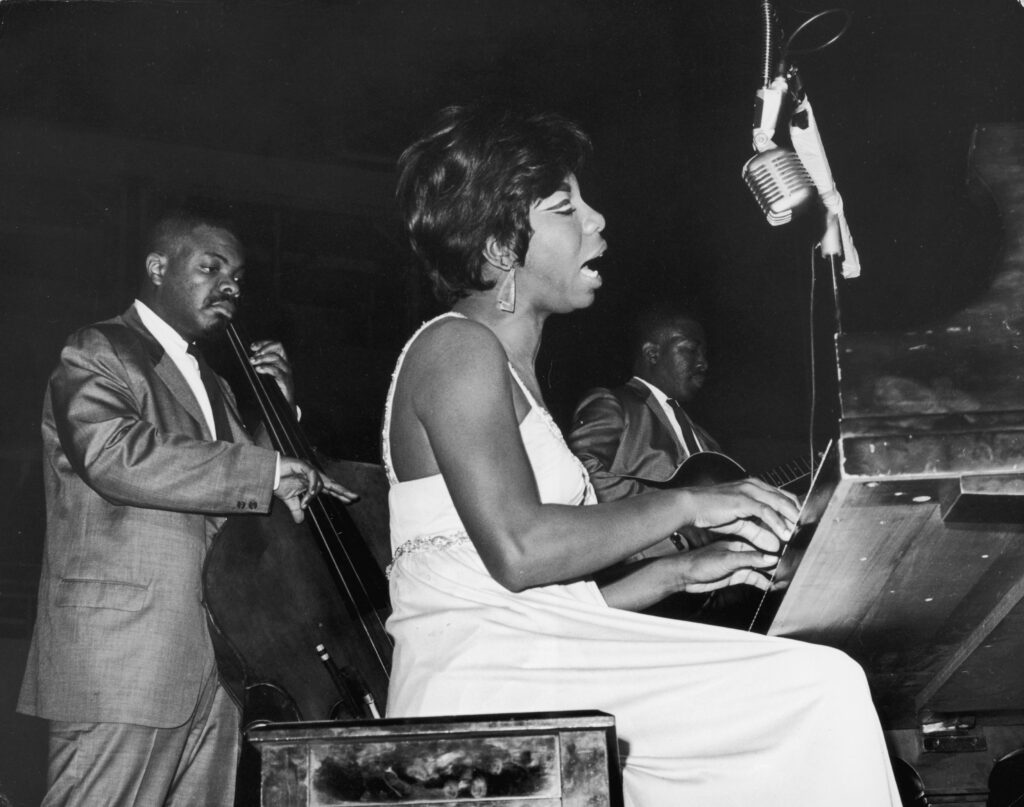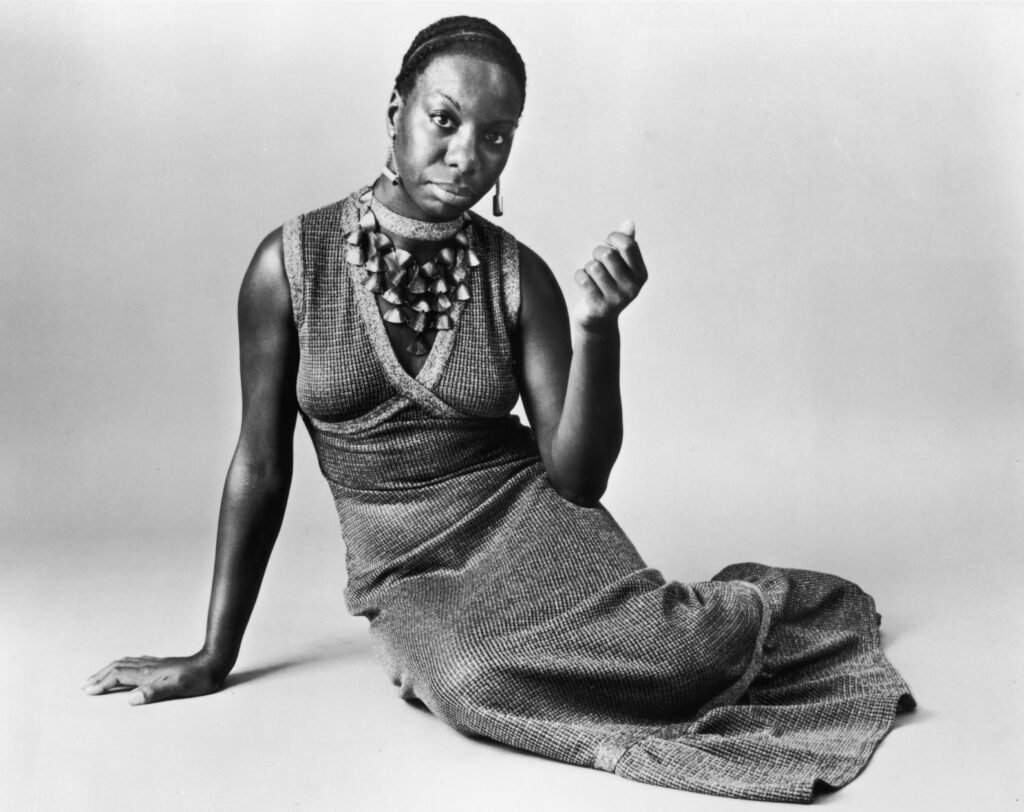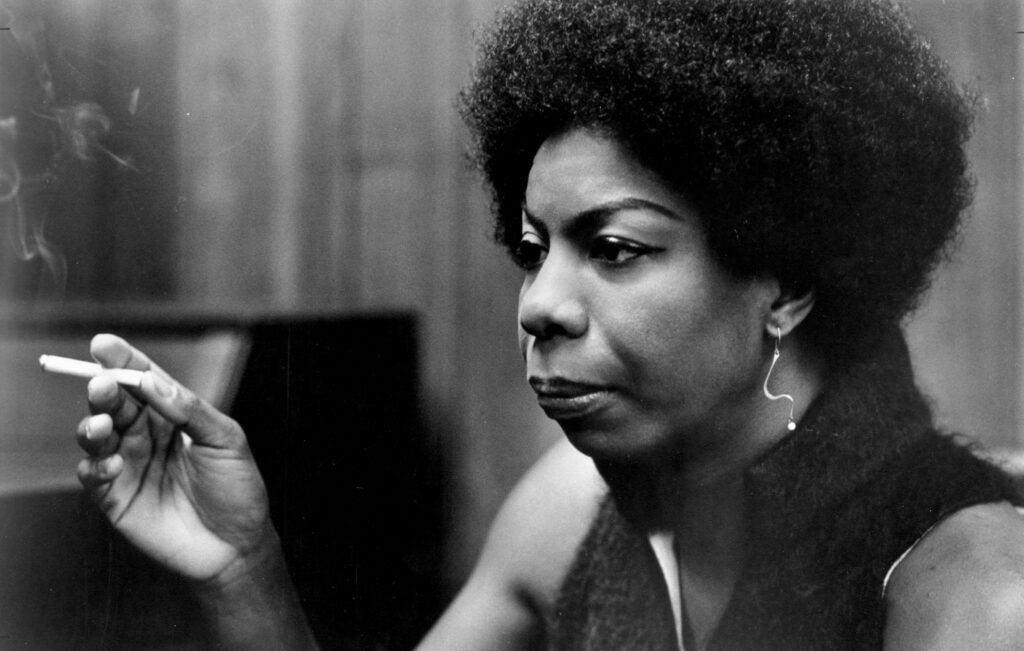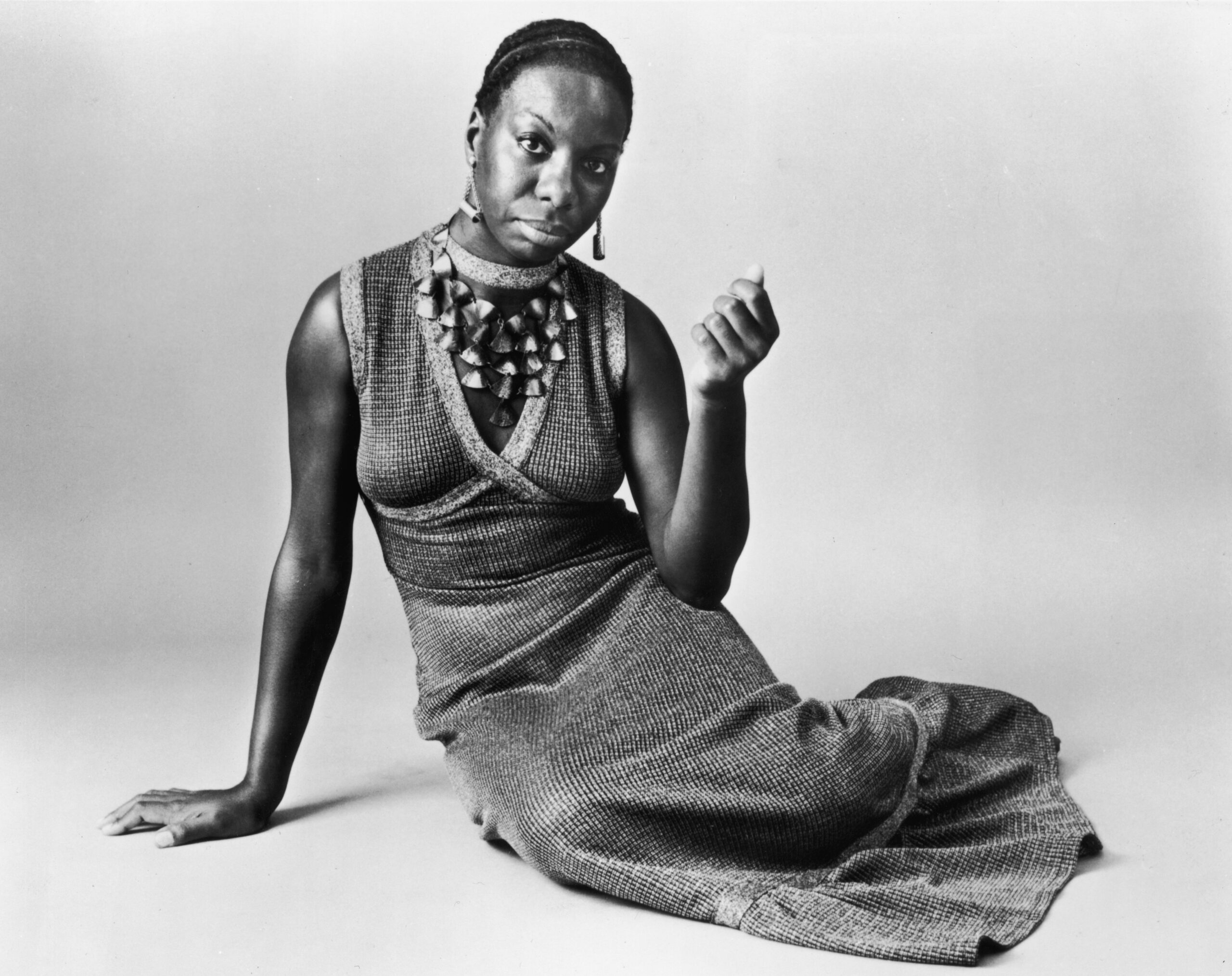Photo by Hulton Archive/Getty Images
By 1963, jazz musician Nina Simone already had an established music career. But two events that year permanently altered her direction. The first was the murder of NAACP activist Medgar Evers on June 12. Simone said that “while Medgar Evers’ murder was not the final straw for me, it was the match that lit the fuse.”
That fuse burned until it reached a powder keg: the 16th Street Baptist Church bombing in Birmingham, Alabama on September 15. When she heard the news of four dead Black girls, she grabbed tools and scrap from her garage and tried “to make a zip gun, a home-made pistol.” After calming down, she instead sat at her piano, and in an hour, produced her first civil rights song, “Mississippi Goddam.”
The song exploded in popularity and launched Simone’s activism. It captured the tumultuous obstacles civil rights activists faced at the time, but also vented her fury at American racism. Organizations such as the Student Non-Violent Coordinating Committee (SNCC) reached out, and Stokely Carmichael later designated her the “great civil rights singer.”

Photo by Hulton Archive/Getty Images
Alongside a transformation in her music, Simone changed her appearance. In her early years, she kept her hair straightened and in a traditionally white-woman’s style, as seen in the image above. As time went on, she sported her hair either braided, pinned up, or in an afro, as seen in the photos below.
No song better describes Simone’s thinking regarding her race, gender, sexuality, and its public perception than “Four Women” (1966). As Nadine Cohodas succinctly wrote, “the song compressed two centuries of Black history into four compact verses.”
Simone describes four different Black women—an enslaved woman, a multiracial woman born from rape, a prostitute, and a woman ready to kill out of bitterness. Each verse shows how Black women must navigate misogynoir—that racially infused misogyny directed towards Black women—in their daily lives, even within the Black community.
The demands of race and gender exhausted Simone. “By the time the sixties ended,” she admitted, “I’d look in the mirror and see two faces, knowing that on the one hand I loved being black and being a woman, and that on the other it was my color and sex which had fucked me up in the first place.”

The assassination of Dr. Martin Luther King, Jr. in 1968 rattled the entire nation, and Simone too was devastated. With the entire Civil Rights Movement reeling, she felt increasingly discouraged. “SNCC was dead in the water,” she said. “CORE was going the same way. The SCLC was still trying to recover after losing Martin.” People were in denial, “but the plain truth was we were in retreat.”
Despite these setbacks, Simone did not give up hope. She supported the rise of the Black Power movement and touted the Black Power manifesto. Because they were willing to fight for the cause, Simone thought the Black Panthers showed Black kids what the fight for racial justice would take.
Her song “To Be Young, Gifted, and Black,” written in memory of her deceased friend Lorraine Hansberry, was recorded and released in 1970, and, unlike her other civil rights anthems, which were full of anger, this one was a joyous celebration of Black youth. While Simone understood that being a Black woman had extra barriers compared to Black men, she inspired the entire Black community.

Photo by Michael Ochs Archives/Getty Images
Simone’s disappointment in the Civil Rights Movement eventually overpowered her hope and, in 1974, she moved to Monrovia, Liberia hoping to find respite. When she settled in Africa, she felt that she had been released from the prison that was America and had found home. She was ready to stay “forever, if everything worked out.”
The 1980 Liberian coup and start of the Liberian Civil War forced her out after six years, however, and for the rest of her life, she never returned to live in the United States.
Simone’s personal life and career were notoriously turbulent (she was later diagnosed with bipolar disorder), but to emphasize these difficulties diminishes the enduring power of her music.
Her music speaks directly to contemporary activist movements. For example, the lyrics in “Mississippi Goddam” need only be partially modified for them to apply to the Black Lives Matter movement. “Four Women” stands as a testament to the continued misogynoir Black women face decades after the song’s release. “To Be Young, Gifted, and Black” continues to tell Black youth to celebrate their skin color and never be ashamed of who they are.

Photo by David Redfern/Redferns

Learn More:
“Four Women.” Track 2 on Wild is the Wind. Philips Record, 1964-1965. Nina Simone. Released 1966.
Lambert, David Brun. Nina Simone: The Biography. London: Aurum Press Ltd, 2009.
“Mississippi Goddam.” Track 7 on Nina Simone in Concert. Philips Records. Nina Simone. Released 1964.
Simone, Nina and Cleary, Stephen. I Put A Spell On You: The Autobiography of Nina Simone. New York: Da Capo Press, 1991.
Thomas, Katherina Grace. “Nina Simone in Liberia.” Guernica Magazine, June 19, 2017. https://www.guernicamag.com/nina-simone-in-liberia/.
“To Be Young, Gifted and Black.” Track 7 on Black Gold. RCA Victor, 1969. Nina Simone. Released 1970.





